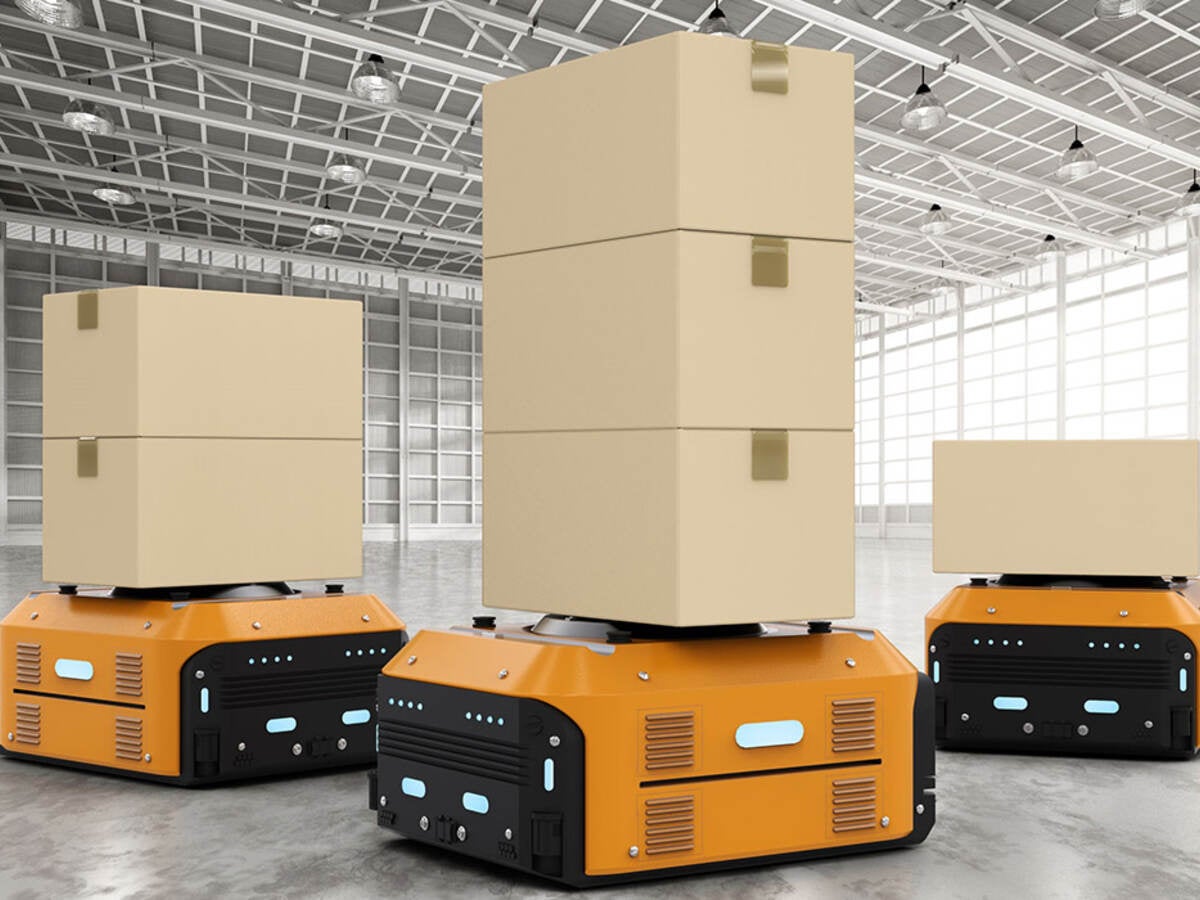August 7, 2018
In a restaurant, instead of a waiter delivering drinks to your table, a drone drops off your club soda. On a college campus, an automated device guides a new student touring the university for the first time. In a hotel, another type of automated device delivers clean towels and hair products to your room.
These scenarios will be possible in the not-too-distant future thanks to the development of unmanned AGVs. A lithium-ion battery-powered device, AGVs are most often used in factory settings but expanding into commercial settings as well.
Whether it’s an industrial truck such as a forklift, flatbed, tow truck or a service vehicle such as described above, AGVs are used to assist and make repetitive tasks easier for those working with the devices. This can include AGVs to move materials around a manufacturing facility or warehouse or to deliver personal items to a guest or visitor.
Though still early in its adoption phase, AGVs are becoming a game changer for business operations and workplace safety today.
Increased productivity and efficiency with unmanned AGVs
“Unmanned AGVs are here to assist the current workforce, not replace it. These vehicles are helping to increase productivity and efficiency by moving materials back and forth continuously without breaks, enabling individuals to focus on other aspects of their jobs that will ultimately get high volumes of product out the door more quickly,” said Joseph Bablo, a principal engineer manager for the energy storage and e-mobility team within UL’s Energy & Power Technologies division.
“Some workplace incidents are also reduced because of AGVs. People no longer have to lift materials and run the risk of accidentally dropping heavy loads on themselves. AGVs can help reduce the possibility of a work-related injury.”
Since AGVs are powered by lithium-ion batteries, a certain level of safety risks must be overcome to achieve these business rewards.
“Any product that has a lithium-ion battery has safety implications if not used correctly,” said Bablo. “The most notable example is the fires that resulted from faulty hoverboards. These products rolled out into the market too quickly without the proper protection schemes in place and without using quality manufacturing methods such as the monitoring of temperature and voltage of cells. These learnings are now taken into consideration for other products powered by lithium-ion batteries including AGVs.”
Related, Drones flying to new heights
The risks of battery systems associated with AGVs is just one consideration. If a device such as an industrial truck is unmanned, that presents a whole new level of challenges.
“If there’s a vehicle operator present, and a fire occurs due to a faulty battery, the individual can act in real-time to prevent severe damage,” explained Bablo. “But if it’s an unmanned vehicle, the batteries are not being physically monitored; and if that battery goes into a thermal runaway situation (the shorting or damage of cells which could lead to a fire), it may go unnoticed until it’s too late.”
In addition, the guidance systems of AGVs, such as object detection and avoidance systems, also potentially pose risks if not properly evaluated. For example, if a vehicle’s guidance systems aren’t detecting its surroundings and operating as intended, they may cause harm to people in the vicinity.
Safe, indoor use of AGV battery systems
UL released UL 3100, Outline of Investigation for Automated Guided Vehicles to support the safer indoor use of AGV battery systems in a commercial or industrial environment. These requirements were developed to address potential risks like the ones outlined above before they happen.
This new outline addresses requirements for the reliability and safety of battery maintenance, battery protection systems and battery monitoring systems, addressing the potential for thermal runaway. In addition, the requirements include risk assessments and functional safety evaluations of the guidance, object detection and avoidance, and braking systems.
“As we learned from the hoverboard incidents, any devices running on lithium-ion batteries face the risk of causing property damage and/or injury to consumers if the products do not follow specific safety requirements. It’s our mission, as a company, to address public safety issues. Our testing work around AGVs is a shining example of our efforts to set up certification requirements for the safety of these devices before any incidents occurring,” said Bablo.
“I believe as more and more manufacturers understand the hazards associated with AGVs and begin to see the UL Mark on AGVs, a level of trust will be established knowing that a stringent evaluation was conducted to address the safety of the product.”

